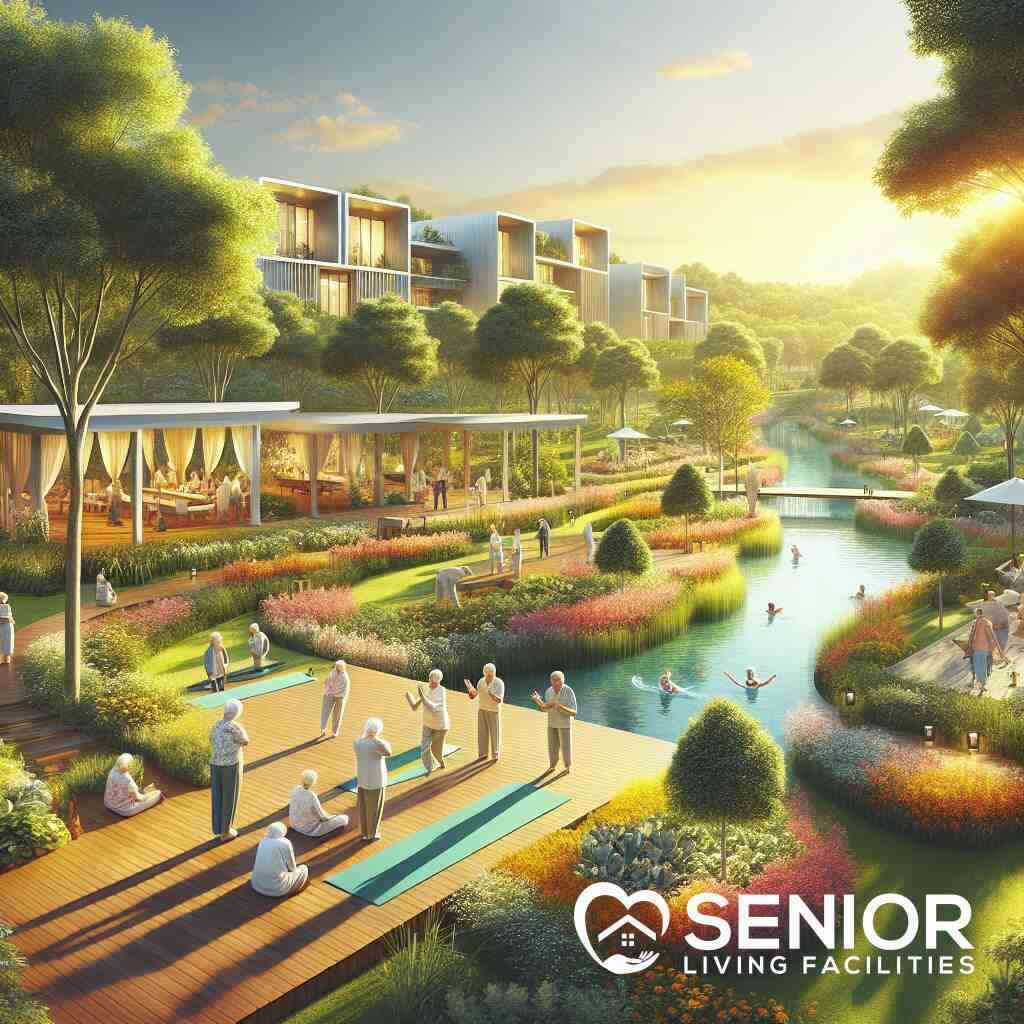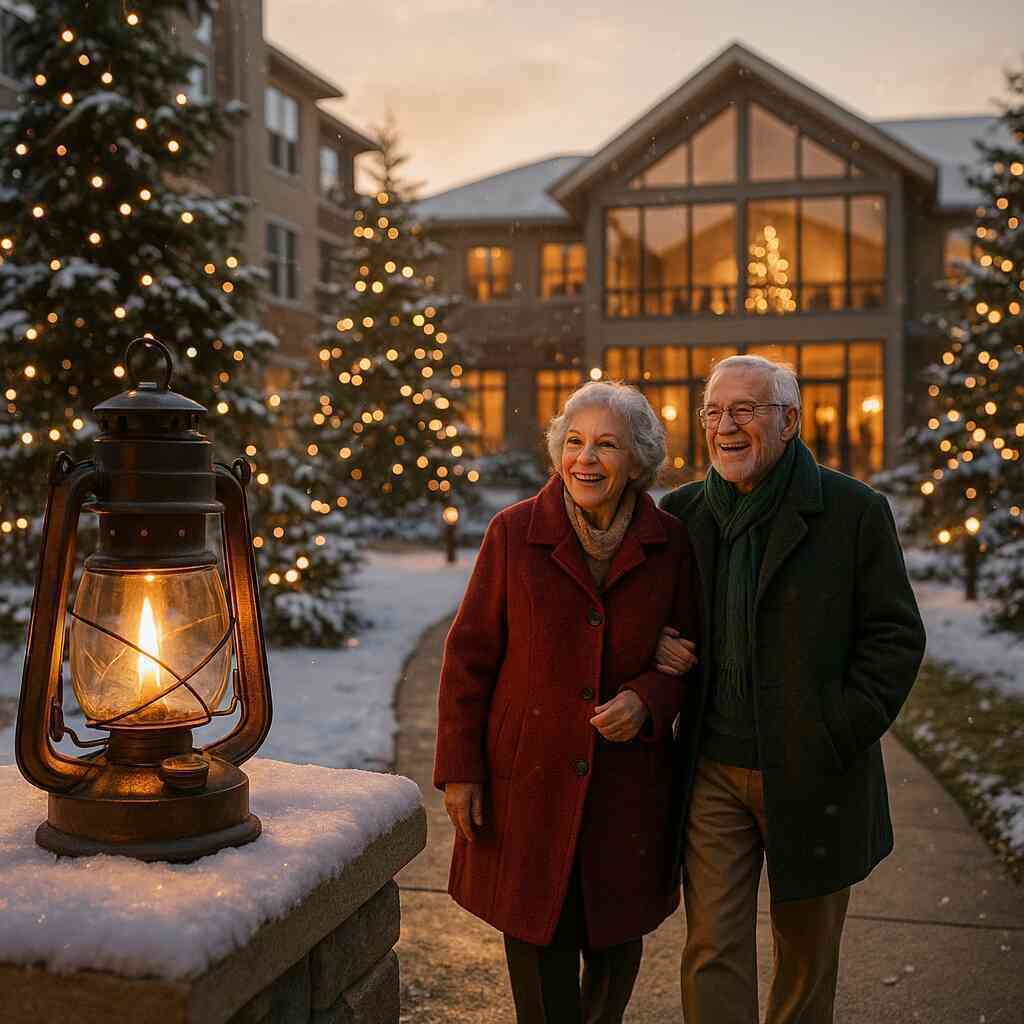
How to Compare Senior Living Facility Offerings Effectively
August 7, 2025
Navigating the Landscape of Senior Living Facilities
Understanding the Senior Living Spectrum
Choosing the right senior living facility begins with understanding the spectrum of options available. From independent living communities designed for active seniors who desire a maintenance-free lifestyle, to assisted living facilities that offer personalized care packages, there is a wide array of offerings tailored to the diverse needs of older adults. As one delves deeper, it becomes crucial to compare senior living communities’ options, considering factors such as the level of medical assistance provided, the nature of community activities, and the degree of independence afforded to residents. This spectrum, therefore, provides a framework for evaluating senior living facilities, making it essential for families and seniors to comprehensively assess their individual needs.
The Role of Geography in Selecting the Right Facility
Geography plays an integral role in selecting the ideal senior living facility. Proximity to family, an area’s climate, and access to healthcare services are pivotal considerations in the decision-making process. For instance, understanding living arrangements for seniors in New York can highlight unique urban benefits, while rural locales may offer tranquility and natural beauty. Moreover, geographical familiarity can ease the transition for seniors, facilitating a sense of continuity. It is vital to weigh these geographical aspects against personal preferences and health needs when evaluating potential facilities.
Key Terminology in Senior Housing Explained
A firm grasp of senior housing terminology is indispensable for effectively navigating the options available. Terms such as ‘age-restricted communities features,’ ‘continuing care retirement communities,’ and ‘personal care homes’ can be confusing. Knowing these terms enables informed decision-making and highlights nuances in care levels and amenities offered across different facilities. For example, understanding the difference between ‘independent living’ and ‘assisted living’ facilities can clarify expectations around services and self-sufficiency. This knowledge proves crucial when analyzing potential living arrangements and contracts.
Exploring Available Resources and Tools
A variety of resources and tools exist to aid in the exploration of senior living facilities. Online platforms offer databases for evaluating senior living offerings, providing insights into community engagement, medical services, and lifestyle accommodations. In addition, reviews and expert opinions are valuable resources that can guide choices regarding the best strategies for choosing senior care facilities. Furthermore, leveraging detailed assessments, like those focused on cost considerations in senior housing, can ensure financial feasibility remains a priority. Utilizing these tools allows for a systematic and informed approach, simplifying what might otherwise be an overwhelming decision process.
Evaluating the Core Offerings of Senior Communities
Comparing Levels of Care Across Communities
When evaluating senior living options, it is crucial to compare the levels of care offered across different communities. Each facility may provide varying degrees of assistance, from basic support in daily activities to specialized medical care plans. Independent living facilities cater to those who enjoy autonomy with access to selected services, while assisted living locations focus on aiding residents with specific needs. Understanding these differences helps tailor your search to your care preferences. By assessing the care continuum, you can ensure that the community aligns with your health requirements, thus simplifying the decision-making process.
Amenities and Life Enrichment Programs
Amenities play a vital role in life enrichment within senior living facilities. Evaluating senior living offerings requires a thorough examination of what services and activities are available. Some communities boast luxurious amenities like fitness centers, pools, arts and crafts studios, and regularly organized excursions. These offerings are not merely for recreation but serve as pivotal avenues for social connections and community integration. Assessing these amenities alongside engagement programs can reveal how they contribute to residents’ emotional and physical well-being. Whether you prioritize artistic pursuits or active lifestyles, the choice of amenities will significantly impact your living experience.
Analyzing Medical Services and Support Options
Medical services and support form the backbone of a senior living community’s offerings. As health needs may vary, identifying communities with comprehensive medical support is essential. Some facilities might have on-site healthcare professionals, while others may partner with nearby medical providers. Evaluating the range of medical services includes understanding health care support in senior living environments, ranging from routine check-ups to emergency response systems. By analyzing these services, families can select a community that not only addresses current medical needs but also adapts to future health scenarios, providing peace of mind for both seniors and their loved ones.
Exploring the Costs and Financial Considerations
Understanding the financial aspect of senior housing is pivotal when comparing offerings. The cost spectrum can vary widely, depending on the level of care, location, and amenities provided. It is necessary to evaluate cost considerations in senior housing to ensure that the chosen facility aligns with your budgetary expectations. Companies like Senior Living Facilities provide insights into financial options that include rental agreements, service plans, and insurance coverage. An in-depth analysis of these factors helps in anticipating the economic impact while safeguarding the quality of life. Ultimately, understanding these costs will help in making an informed, fiscally responsible decision.

Decoding the Personalization of Care in Senior Living
Tailoring Your Search: Needs vs. Wants
Recognizing the distinction between needs and wants is foundational when personalizing senior care options. Begin your search by listing essential care requirements, such as medication management or mobility support, to ensure these are non-negotiable features in your chosen facility. Simultaneously, identify desired amenities to enhance the quality of life, such as proximity to cultural institutions or access to recreational programs. Balancing these aspects enables you to filter facilities effectively, streamlining the decision process while leaving room for personalized experiences.
The difference between need and desire is pivotal. Needs focus on requirements for survival or health, whereas wants enhance living standards. This understanding facilitates efficient search tailoring, ensuring foundational requirements are met while personalized desires are addressed.
Assessing Community Culture and Lifestyle Fit
Evaluating the culture of a senior living community is crucial in achieving a comfortable lifestyle fit. This assessment involves gauging the community’s values, resident interactions, and engagement levels. A supportive environment that fosters senior community engagement and activities is indicative of a vibrant community that values socialization and inclusivity. Analyzing staff attitudes, communication styles, and community rules also reveals underlying cultural aspects, aiding in determining whether the community aligns with your lifestyle preferences.
Spotlighting culture aids in visualizing day-to-day life. It reveals subtle dynamics, practices, and values, enabling informed choices that align with personal lifestyles. An environment conducive to holistic growth ensures comfort and satisfaction.
The Importance of Senior Engagement Opportunities
Opportunities for engagement significantly enhance the quality of life within senior communities. A facility’s commitment to providing diverse social activities, clubs, and events is a telling indicator of its focus on community well-being. Access to cultural events, educational workshops, and recreational programs not only offers residents opportunities for personal growth but also fosters a sense of belonging and community integration. Thus, evaluating the community’s array of engagement options is paramount to ensure a dynamic and fulfilling senior living experience.
Engagement opportunities play a critical role in mental, emotional, and physical wellness. They foster social bonds and enrich daily life, promoting well-being and vitality, anchoring a supportive communal environment.
Examining Contractual Obligations and Flexibility
A comprehensive understanding of contractual obligations within senior living facilities is essential before making a final decision. Scrutinizing contracts for terms related to fees, services, and care provisions can prevent unforeseen challenges and unnecessary costs. Moreover, evaluating the flexibility of agreements, such as policies on adjustments to care plans or service modifications, is crucial. Facilities that accommodate evolving needs demonstrate a commitment to personalized care, ensuring residents receive appropriate support over time.
Contracts define the scope of services and responsibilities. Their clarity and flexibility impact the living experience. Understanding these parameters safeguards expectations and fosters a resident-focused environment, primed for current and future needs.
Advanced Strategies for Making Informed Decisions
Utilizing Review Platforms and Expert Opinions
In the quest to find the ideal senior living community, tapping into review platforms and expert opinions can prove invaluable. Online review platforms offer first-hand accounts and ratings from current and previous residents, providing real-world insights into the quality and nuances of a community’s offerings. Expert opinions, often found in articles or by consulting professionals in the senior care industry, can further elaborate on essential aspects such as facility reputations and the overall quality of care provided. Engaging with these resources allows for a comprehensive senior living assessment, ensuring that your decision is based on a balanced view of experiences. This strategy enhances transparency, helping families and seniors to avoid potential pitfalls and to choose a facility that best meets their needs.
Conducting In-Depth Facility Tours and Assessments
Visiting facilities in person remains one of the most effective methods of evaluating senior living options. An in-depth tour and assessment provide a tangible sense of the community’s environment, amenities, and daily operations. This firsthand experience allows you to observe the cleanliness of the facility, the demeanor of staff, and the interactions among residents. Taking notes during visits and asking pertinent questions about care levels, medical services, and lifestyle opportunities helps clarify what makes each facility unique. By physically being present, you can assess subtle details that may not be evident in brochures or online descriptions, lending confidence to your decision-making process.
Engaging with Current Residents and Staff
Engaging directly with current residents and staff members of a senior living facility can offer profound insights into daily life within the community. Conversations with residents provide personal perspectives on their experiences and satisfaction levels, revealing how well the facility meets its claims and adheres to its mission. Similarly, interactions with staff can highlight the quality of care provided and the facility’s atmosphere. These engagements often uncover authentic narratives and can alert you to any red flags, ensuring that the facility’s culture and services align with your expectations. Including these interactions in your evaluation can make a significant impact on selecting a genuinely supportive and fulfilling community.
Making the Final Decision: A Comprehensive Checklist
Creating a comprehensive checklist can be a pivotal tool in making the final decision regarding senior living facilities. This checklist should include criteria such as level of medical care, types of amenities, community culture, cost structures, and contractual terms. Compiling this information into an organized format allows for clear comparisons between potential options and supports a methodical approach to decision-making. Ensuring that you’ve carefully considered these factors in line with your priorities and preferences aids in choosing the most suitable community. By utilizing tools like a checklist, decisions become less overwhelming, helping to guarantee a choice that is informed and aligned with both immediate needs and future expectations.

Embracing Your Decision with Confidence
Understanding Post-Move Support and Transition
Making the transition to a senior living facility can be challenging, both emotionally and physically. Understanding post-move support is essential to ensure a smooth transition. Many senior communities offer dedicated resources and staff to assist new residents in acclimating to their new environment. This support often includes orientation programs, social mixers, and personal advisors who help new residents settle in. Emphasizing these resources can alleviate stress and foster a sense of belonging from the outset, making the process more comfortable for both seniors and their families. Choosing a community with a robust transition program is crucial for a seamless relocation, allowing for a positive start to this new chapter in life.
Evaluating Satisfaction and Adapting Over Time
Evaluating satisfaction after moving into a senior living community is vital for long-term happiness. Regularly assessing your contentment with amenities, services, and social opportunities helps identify any areas needing improvement. Communities that prioritize feedback and offer flexible care adjustments are more likely to meet evolving needs and preferences over time. Residents should feel empowered to voice concerns and request changes to services, ensuring their living environment continues to support and enhance their well-being. This proactive approach to evaluation and adaptation underscores the importance of choosing facilities renowned for responsive and resident-focused care.
Celebrating Community Integration and Social Connection
Community integration is the cornerstone of a fulfilling senior living experience. Celebrating social connections within the community enriches daily life and promotes wellness. Many facilities emphasize senior community engagement opportunities through organized events, shared interest groups, and volunteer programs, fostering an inclusive atmosphere. These opportunities enable residents to forge new friendships, participate actively in communal life, and contribute positively to their environment. Embracing this integration not only enhances personal satisfaction but also contributes to a vibrant community culture that values each individual’s presence. For those exploring community amenities in Arizona, it is crucial to consider facilities that make community integration a priority to enrich the overall living experience.
Incorporating these elements into your senior living journey can transform potential anxieties into a celebration of new beginnings. By understanding the support systems available, evaluating personal satisfaction, and engaging with the community, seniors can confidently embrace their new home, ensuring a rich, supportive, and fulfilling lifestyle.
Frequently Asked Questions
Question: How can I effectively evaluate senior living options using the resources provided by Senior Living Facilities?
Answer: Evaluating senior living options effectively requires a thorough understanding of what each facility offers in terms of care levels, amenities, and community engagement. Senior Living Facilities provides an extensive database that covers senior communities across all states in the U.S., making it easier to compare senior living facilities. By using our platform, you can assess key factors like the types of medical services available, the variety of life enrichment programs offered, and the overall culture of the community. This rich information helps in making informed choices that best fit the individual needs and lifestyle expectations of seniors.
Question: What should families consider when comparing senior care packages according to the blog titled How to Compare Senior Living Facility Offerings Effectively?
Answer: The blog emphasizes the importance of comparing senior care packages by considering factors like the level of medical assistance required, the nature of amenities provided, and the cost of services. Families should prioritize understanding the differences between independent living and assisted living, especially in terms of medical care and support options. Senior Living Facilities can assist in this process by offering personalized guidance and a clear comparison of senior care package offerings tailored to the diverse needs of older adults. By focusing on needs and desires, families can ensure they select a solution that fosters both well-being and a vibrant lifestyle.
Question: Why is understanding senior housing contracts a critical step in the senior living assessment process?
Answer: Understanding senior housing contracts is vital in the senior living assessment process because it sets clear expectations about services, fees, and care provisions. Evaluating flexibility within these contracts regarding service modifications and care adjustments is crucial to ensure that the chosen community can accommodate changing needs over time. Deciphering Senior Living Dynamics: A 2025 Perspective Senior Living Facilities offers detailed insights into these contractual obligations, ensuring families can avoid unforeseen challenges and select a community that delivers continuous and adaptable care, thereby supporting long-term satisfaction and security.
Question: How do engagement opportunities in senior communities enhance the well-being of residents, and what role do Senior Living Facilities play in promoting these opportunities?
Answer: Engagement opportunities within senior communities enhance residents’ well-being by fostering social connections and offering avenues for personal growth. Activities such as cultural events, educational workshops, and recreational programs enhance mental, emotional, and physical wellness. Senior Living Facilities highlights these opportunities within the community’s offerings, advocating for environments that prioritize vibrant social lives and community integration. By connecting families with communities that emphasize engagement, Senior Living Facilities ensure seniors can live fulfilling lives rich with social interaction and personal development.
Question: How can Senior Living Facilities aid in decoding the personalization of care offerings in senior housing options exploration?
Answer: Personalization of care is pivotal in ensuring seniors’ needs and wants are adequately met. Senior Living Facilities assists in this exploration by offering tools to differentiate between various senior living community features and care levels. Our guidance helps families balance essential care requirements with desirable amenities, such as location preferences or recreational options, ensuring a tailored fit for each individual. By understanding the nuances of different care packages, we empower families to choose communities that align with both everyday necessities and lifestyle aspirations.


